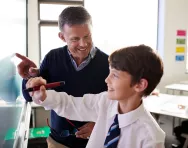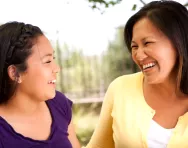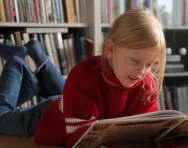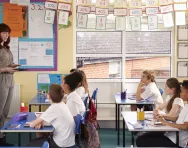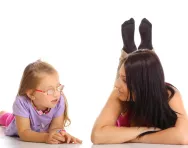Important update from TheSchoolRun
For the past 13 years, TheSchoolRun has been run by a small team of mums working from home, dedicated to providing quality educational resources to primary school parents. Unfortunately, rising supplier costs and falling revenue have made it impossible for us to continue operating, and we’ve had to make the difficult decision to close. The good news: We’ve arranged for another educational provider to take over many of our resources. These will be hosted on a new portal, where the content will be updated and expanded to support your child’s learning.
What this means for subscribers:
- Your subscription is still active, and for now, you can keep using the website as normal — just log in with your usual details to access all our articles and resources*.
- In a few months, all resources will move to the new portal. You’ll continue to have access there until your subscription ends. We’ll send you full details nearer the time.
- As a thank you for your support, we’ll also be sending you 16 primary school eBooks (worth £108.84) to download and keep.
A few changes to be aware of:
- The Learning Journey weekly email has ended, but your child’s plan will still be updated on your dashboard each Monday. Just log in to see the recommended worksheets.
- The 11+ weekly emails have now ended. We sent you all the remaining emails in the series at the end of March — please check your inbox (and spam folder) if you haven’t seen them. You can also follow the full programme here: 11+ Learning Journey.
If you have any questions, please contact us at [email protected]. Thank you for being part of our journey it’s been a privilege to support your family’s learning.
*If you need to reset your password, it will still work as usual. Please check your spam folder if the reset email doesn’t appear in your inbox.
What is Circle Time?
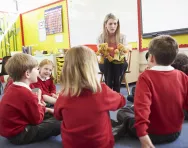
Relationships between primary school children can be difficult at times. They have yet to develop the social, emotional and communication skills that will help them negotiate relationships as adults.
Many schools implement Circle Time as a tool for improving relationships and behaviour, but what actually takes place during these sessions?
What is Circle Time?
Circle Time is a popular activity that’s used in many primary schools to help develop positive relationships between children. It aims to give them tools to engage with and listen to each other.
It’s often used as an opportunity to solve problems that are affecting the class, for example too much talking during lessons, or someone being picked on.
The whole class takes part in Circle Time at the same time, usually led by their teacher, who sits in the circle with their pupils.
The circle encourages unity, respect, turn-taking and working together towards a shared vision.
It also helps children work on five key skills, without which Circle Time doesn’t work: thinking, listening, looking, speaking and concentrating.
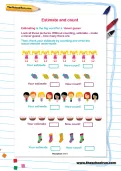
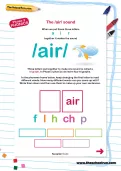
Start the Reception Learning Programme today!
- Weekly maths & English worksheets direct to your inbox
- Follows the National Curriculum
- Keeps your child's learning on track
When is it used?
Circle Time is used mainly in primary schools, although it can also work in preschool settings. It’s sometimes used in secondary schools, too.
Ideally, it should take place weekly, and last between 20 and 50 minutes, depending on the children’s ages and ability to concentrate.
It’s usually led by a teacher, although sometimes older children run Circle Time for younger pupils.
What happens during Circle Time?
Circle Time shouldn’t just be a time to chat; it needs a specific structure to make sure all children have the opportunity to be involved.
Certain ground rules apply, and children are often involved in deciding what those rules should be. Common rules include:
- Putting hands up to speak, and not interrupting;
- Taking turns;
- Allowing children to ‘pass’ if they don’t want to speak;
- Valuing all contributions and not putting anyone down.
Teachers will often put a Do Not Disturb sign on the door so their Circle Time isn’t interrupted.
During Circle Time, children should sit in a circle, either on the floor or on chairs. Their teacher is part of the circle, too, and while they will direct the activities, they should aim to keep a low profile so children have a chance to speak up.
Often, an object like a large shell, a ball, a rubber egg or a teddy will be passed around the circle. When a child is holding the object, it’s their turn to speak.
Teachers will choose from a range of activities, such as co-operative games, rounds, musical games, drama activities, talking and listening exercises, puppets and masks.
Sometimes, a particular issue that’s affecting the class, school or a pupil is tackled; on other occasions, there may be more general discussions around thoughts and feelings.
A typical Circle Time might follow the following format:
- Children are reminded of Circle Time rules.
- Activity 1: Simon Says. This helps children start to listen, look and concentrate.
- Activity 2: a musical game. The teacher might beat a drum or similar instrument, and children march on the spot, imitating the beat: loud, soft, fast, slow etc. When the instrument stops, the children stop too.
- Activity 3: Talking Ted. The teacher tells the class a short story about a boy who has started at a new school and is having trouble making friends. He feels lonely and sad. The children then pass the Talking Ted (or other object) around the circle, and say what makes them feel sad. They are allowed to and have their turn at the end of the round if they want. This encourages them to talk about their feelings and empathise with others.
- Activity 4: an imagination game. The teacher has a magic wand, waves it, and says, ‘You are all elephants/dogs/tigers’ etc. The children do the sounds and actions in the circle. The wand is then passed from child to child to try.
- Final activity: a calming down game. The teacher tells the children to freeze on the spot, like statues. The statues then slowly melt to the ground.
Circle Time should be fun and light-hearted, and always ends on a positive note with an activity that calms children down and gets them back into learning mode.
What are the benefits?
Circle Time has many benefits for children as individuals and their school. These include:
- Improved speaking and listening skills.
- Increased self-esteem.
- A sense of community.
- An understanding of how their behaviour affects others.
- Improved emotional intelligence.
- Improved problem-solving skills.
- A sense of responsibility.
- Improved relationships between children, and between children and their teacher.
The benefits are neatly summed up by an extract from one primary school’s OFSTED report: ‘The weekly Circle Time for each class enables pupils of all ages, at their own level, to reflect on aspects of their lives, to discuss moral and social issues and to express with confidence their understanding of right and wrong and their sense of justice. Pupils learn to listen to others, to be tolerant of other viewpoints and to respect fellow pupils.’
